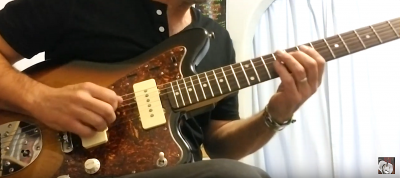What Is The Treble Clef?, Introduction to the Treble Clef and It's Relationship to Guitar |
|
 |
Replies
(1 - 3)
|
|
|
|
| Mar 7 2013, 06:23 PM |
|
Cool stuff!
|
|
|
||
|
|
|
|
| Mar 7 2013, 09:03 PM |
|
It's also called the 'G' clef because 1) it's a fancy, archaic, script G and because the 'curly Q' surrounds the G line in the staff. Actually, it denotes the line that will be G in the staff.
*You can occasionally, especially if you play a lot of classical orchestral music and/or study music theory at university, see the curly Q encircling a different line. For example when the G clef is placed on the first line of the staff (E), it is called the French clef or French violin clef. Now that line is G and everything shifts accordingly. Thankfully, as guitarists we will never see this. OT, don't look if you don't get what I just wrote ... Spoiler: This post has been edited by klasaine: Mar 7 2013, 09:04 PM -------------------- - Ken Lasaine
https://soundcloud.com/klasaine2/foolin-the-clouds https://soundcloud.com/klasaine2/surfin-at-the-country-hop Soundcloud assorted ... https://soundcloud.com/klasaine3 New record ... http://www.cdbaby.com/cd/kenlasaine Solo Guitar ... https://www.youtube.com/playlist?list=PLXZh...5iIdO2tpgtj25Ke Stuff I'm on ... https://www.youtube.com/playlist?list=PLXZh...b-dhb-4B0KgRY-d |
|
|
||
|
|
|
|
| Mar 7 2013, 10:36 PM |
|
-------------------- |
|
|
||
1 User(s) are reading this topic (1 Guests and 0 Anonymous Users)
0 Members:























